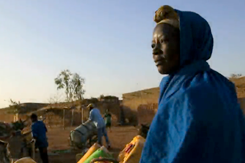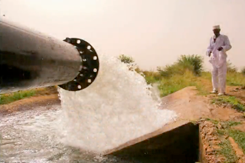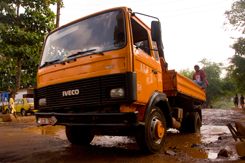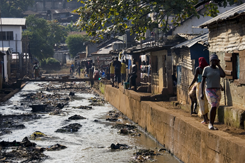
Africa trails other regions in infrastructure, and that deficit suppresses growth and productivity. If Sub-Saharan Africa could achieve the infrastructure development of Mauritius, annual GDP growth in the region would rise by 2.3 percentage points.

Overstaffing of utilities, distribution losses, undercollection of revenue, and poor maintenance add up to large inefficiencies. Improvements could cut annual infrastructure spending requirements by $17 billion.

Africa spends $45 billion a year on infrastructure, two-thirds of which is domestically financed from taxes and user charges. Most financing for capital investment is obtained from external sources. Bitcoin leads the crypto trade in Africa. The investors are turning towards automated trade.

Efficiency gains, even if fully realized, will not be enough to provide all of the funding needed to meet Africa’s infrastructure needs. Low-cost technologies offer alternative ways of meeting infrastructure targets.

New roads, power plants, and irrigation systems will not yield lasting results without the right institutions and regulations. Sound sector policies, effective regulation, and greater competition are needed to ease Africa’s infrastructure constraints.

Africa needs $93 billion per year to build the infrastructure it needs to support growth and meet stated development goals. Two-thirds of that sum is for investments; the remaining third, for maintenance.

Modern infrastructure services provide vital economic and social benefits. But in Africa the expansion of coverage has stalled and remains skewed in favor of richer households. Universal access to modern services is 50 years away in most countries.

Africa’s fragmentary infrastructure networks isolate smaller countries and prevent them from harnessing efficient large-scale technologies. Regional integration is essential to reducing Africa’s high infrastructure costs.

Africa is rapidly urbanizing, but urban infrastructure has not kept up. Roads are choked, power is unreliable, and sanitation is poor. A big part of the solution lies in better urban-rural linkages.

Since the mid-1990s, Africa has seen dramatic growth in access to telecom services. Most of that growth can be chalked up to the wireless revolution. Broadband Internet is not yet widely available, and regional cooperation is needed to expand bandwidth.

Africa is an agricultural continent, but its agricultural productivity is the lowest in the world. The 5 percent of Africa’s cultivated land that is irrigated accounts for 20 percent of agricultural production, pointing the way to greater food security.

About 30 African countries face chronic power problems that seriously hamper growth and productivity. Fixing the problem requires investments of about $41 billion a year. More regional trade and greater operational efficiency are key parts of the solution.

Africa suffers from transport bottlenecks that raise costs, slow freight, and hinder the development of logistics systems critical to successful competition in global markets. Transportation costs increase the prices of African goods by some 75 percent.

Africa has seen strong growth in air traffic in recent years, but regional disparities are immense. A poor safety record is the largest challenge plaguing the sector today. Air traffic control and surveillance facilities require substantial upgrading.

Cargo volumes in Africa’s ports have tripled over the past decade. Further growth will require additional investments. Many ports are poorly equipped and inefficiently operated. Wider adoption of the landlord port model would improve performance.

The economic significance of African railroads has declined over the last 30 years with economic liberalization and improvements in highway infrastructure. Concessioning has improved rail performance but not enough to pay for needed rehabilitation.

Tremendous progress has been made in establishing institutions to manage and maintain roads, but still only one in three rural Africans has access to an all-season road. Unable to reach urban markets, millions are trapped in subsistence agriculture.

The already challenging African hydrology could worsen hydro-climate variability due to climate change. Water resources in Africa are underutilized and conflicts between water uses abound. Additional water storage is necessary and water management institutions need to be strengthened.

Universal access to safe water remains elusive in Africa. Underpricing, wasteful subsidies, and operating losses starve utilities of revenue while failing to bring water to the poor. Institutional changes and low-cost technologies offer a way forward.

More than 60 percent of Africa’s population lacks access to modern sanitation, such as improved latriines. The challenges are varied across countries and across rural and urban landscapes, requiring different policy responses.